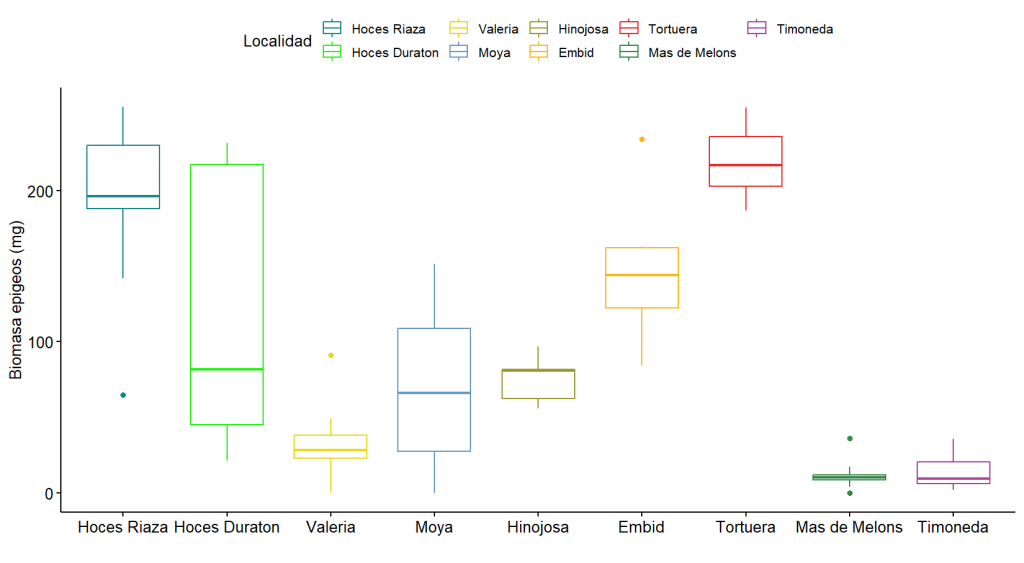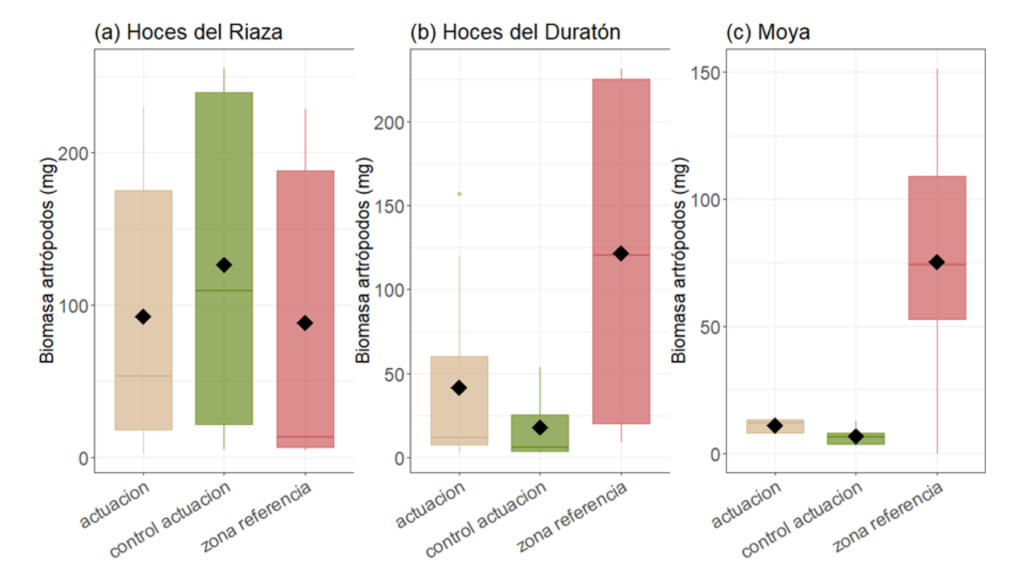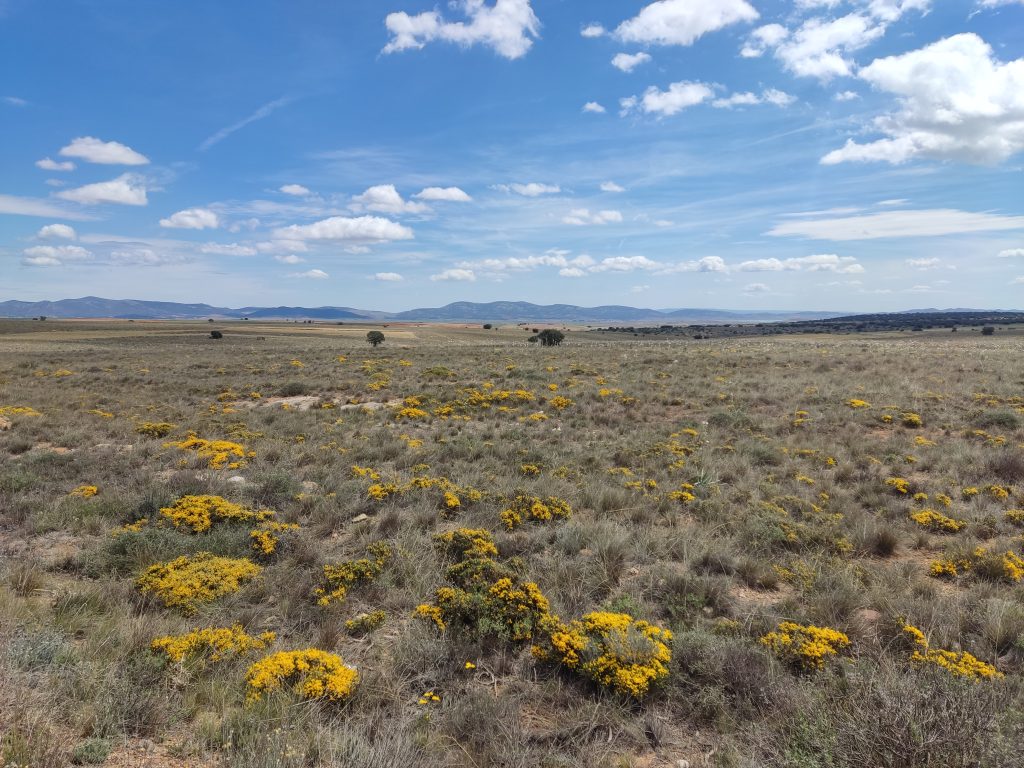By Julia Zurdo
As part of the LIFE Connect Ricotí Project, the habitat quality of the Dupont’s lark is monitored annually. In addition to the structure and composition of vegetation, food availability (arthropod biomass) is a key indicator of habitat quality, as it critically influences habitat selection by insectivorous birds such as the Dupont’s lark.

According to the results (Figure 1), arthropod biomass varies across the study locations, with higher values observed in Hoces del Riaza (Segovia) and Tortuera (Guadalajara), and lower values in Valeria (Cuenca), Mas de Melons, and Timoneda d’Alfés (Lleida).

Within the study locations, differences in food availability were also found between reference zones (areas in good conservation condition), intervention zones (subjected to restoration measures), and control-intervention zones (Figure 2).

The goal is to achieve, through habitat restoration and improvement actions, the levels of arthropod availability found in the reference zones.


